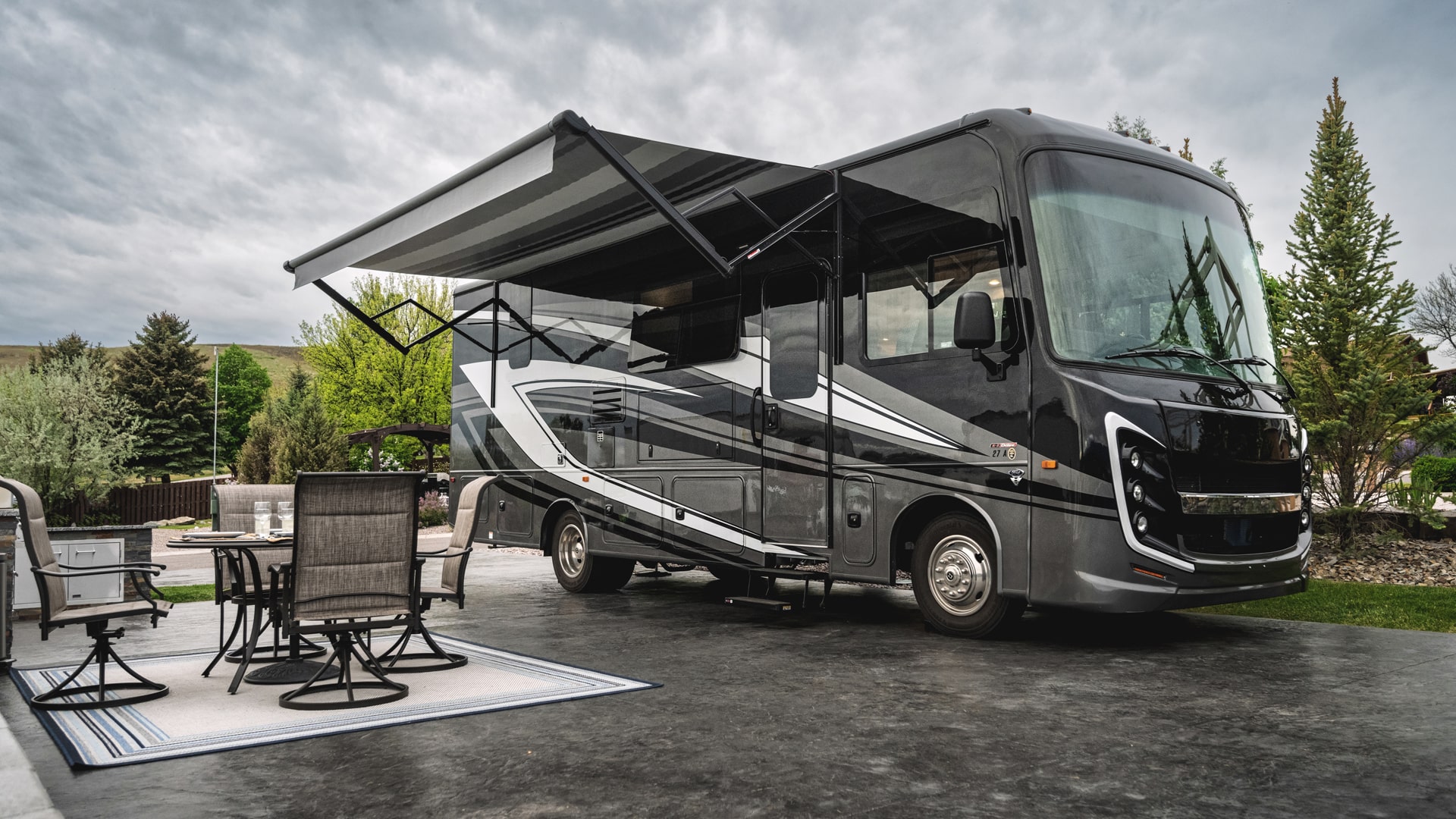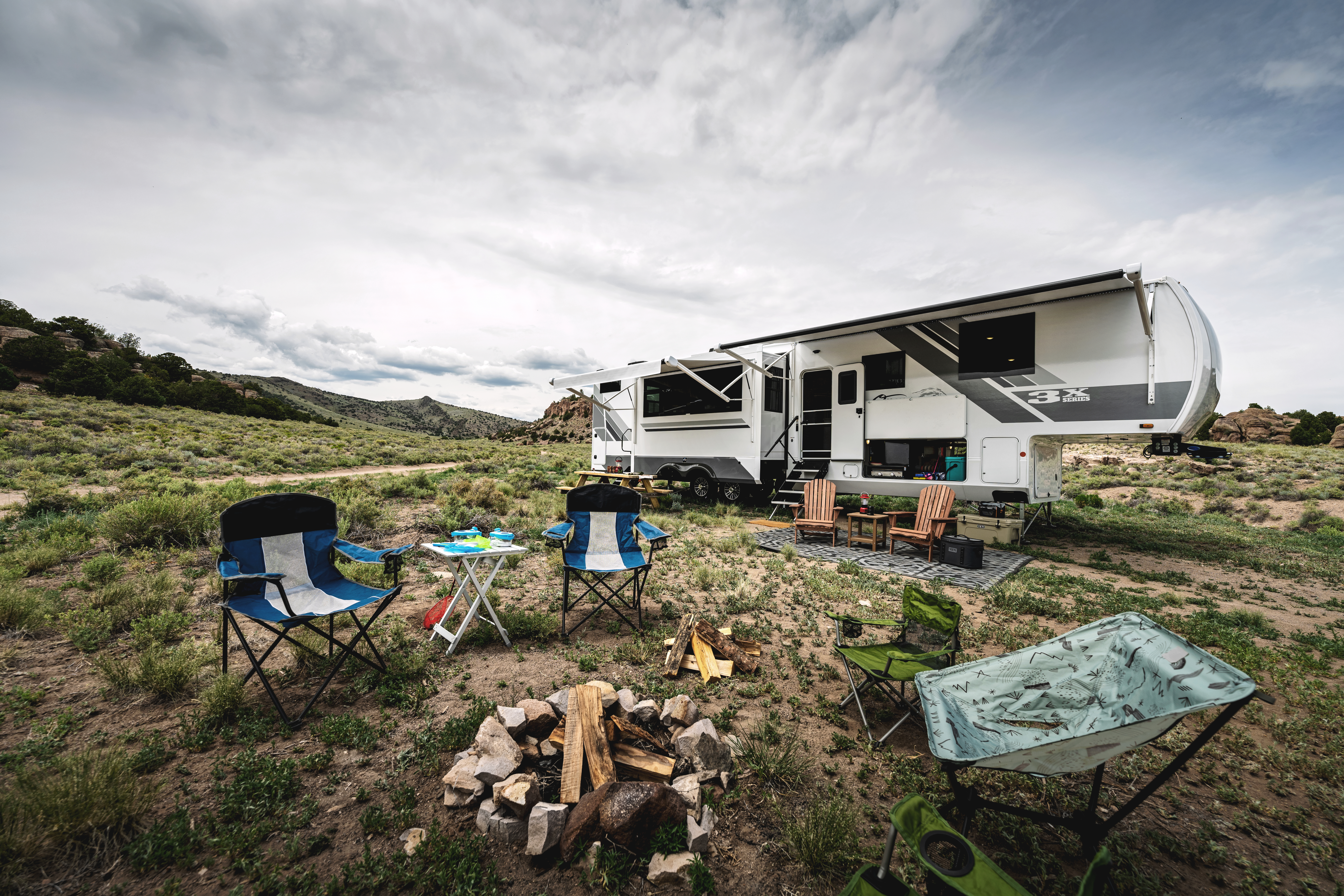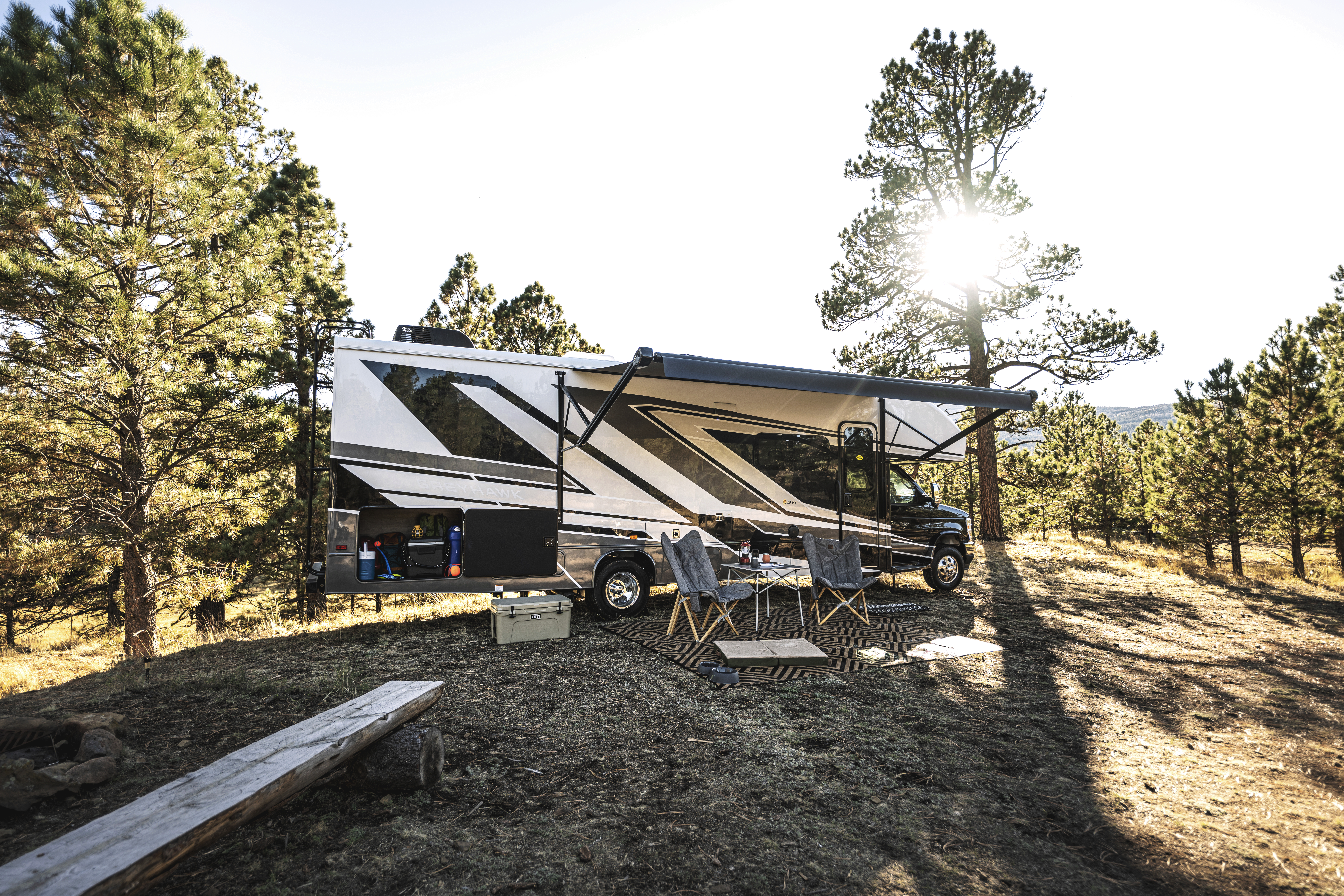
RV Buying
Stationary RV Living: What to Know Before Settling Down
For many, living in an RV is all about travel and adventure. But not every RVer is constantly on the move. Full-time stationary RV living is an increasingly popular option for those looking to enjoy the benefits of RV life without the hassle of frequent travel. Whether you plan to live full-time in an RV to save money, stay close to work or simply enjoy a minimalist lifestyle, there are a few things to consider. This guide covers the pros and cons, how to choose an RV for stationary living and tips for setting up a comfortable home on wheels.

What Is Stationary RV Living?
Full-time stationary RV living means staying in one place for an extended period—whether it’s an RV park, private land or a long-term rental spot. Unlike full-time travelers who move frequently, stationary RVers set up their RV like a permanent residence. This lifestyle appeals to retirees, remote workers and budget-conscious individuals looking for an alternative to traditional housing. It also provides the flexibility of living in an RV while maintaining a sense of stability.
Pros and Cons of Full-Time Stationary RV Living
Before committing to a long-term stay, it’s important to weigh the advantages and challenges of stationary RV living.
Pros
- Lower cost of living – Many RV parks offer discounted rates for long-term residents, reducing monthly expenses compared to renting or owning a house.
- Less wear and tear – Staying in one place reduces stress on your RV’s tires, brakes and engine.
- More living space options – Without the need to pack up and move frequently, you can extend your living space with an outdoor kitchen, storage solutions or patio setup.
- Better utilities – A stationary RVer can take advantage of full hookups, including sewer, water, electricity and Wi-Fi access.
Cons
- Limited mobility – While full-time travelers enjoy new scenery, stationary RVers sacrifice that flexibility.
- Weather exposure – Your RV will face year-round elements, requiring proper insulation and maintenance.
- Holding tank maintenance – Even with hookups, holding tank care is necessary to prevent buildup and odors.
- Warranty - Not all RVs are legally warrantied for full-time living. To avoid risking losing your RV warranty, check with the RV manufacturer, prior to purchasing.
- More wear and tear - On the flipside, living in the small space of your RV, means that the amenities are being used more frequently than weekend camping, causing normal wear and tear to increase

How to Choose an RV for Stationary Living
Not every RV is built for long-term stays. If you plan to live full-time in one spot, selecting the right rig is essential. Prior to purchasing, you should always check with the manufacturer to see if the unit is warrantied for the RVing that you intend to do.
Key Factors to Consider
- Size & layout – Highly recommend a model with a spacious interior, multiple slide-outs and a designated living space for comfort.
- RV year & build quality – Older RVs may require insulation upgrades. A newer RV year often means better energy efficiency.
- Outdoor features – An outdoor kitchen can expand your cooking options, making meal prep easier in warm climates.
If you're looking for an RV with plenty of space for long-term living, check out our guide on the best RVs for large families to find models with ample storage and roomy interiors.
Finding the Right RV Park for Long-Term Living
Not all RV parks allow full-time stationary RV living, so it’s important to find a location that fits your needs.
What to Look For in a Long-Term RV Park
- Discounted rates – Many parks offer lower pricing for monthly stays.
- Amenities – Reliable Wi-Fi, laundry facilities and recreation areas can improve quality of life.
- Rules & regulations – Some parks have restrictions on RV age, appearance or modifications like decks and sheds.
Private land rental is another option, but check local zoning laws to ensure long-term RV living is permitted.
Setting Up for Stationary RV Living
Once you’ve chosen your location, it’s time to make your RV feel like home.
Holding Tank Solutions
If you’re connected to a sewer hookup, use a holding tank treatment to prevent clogs and odors. Without full hookups, regular dumping and maintenance are necessary.
Wi-Fi & Connectivity
A Wi-Fi booster or wired internet setup ensures a reliable connection for work, streaming or browsing. Mobile hotspots can serve as a backup if campground Wi-Fi is unreliable.
Creating a Comfortable Outdoor Space
An outdoor kitchen, patio furniture and weatherproof storage can expand your living space. Consider skirting around your RV to reduce heat loss in colder months.
Loading...
